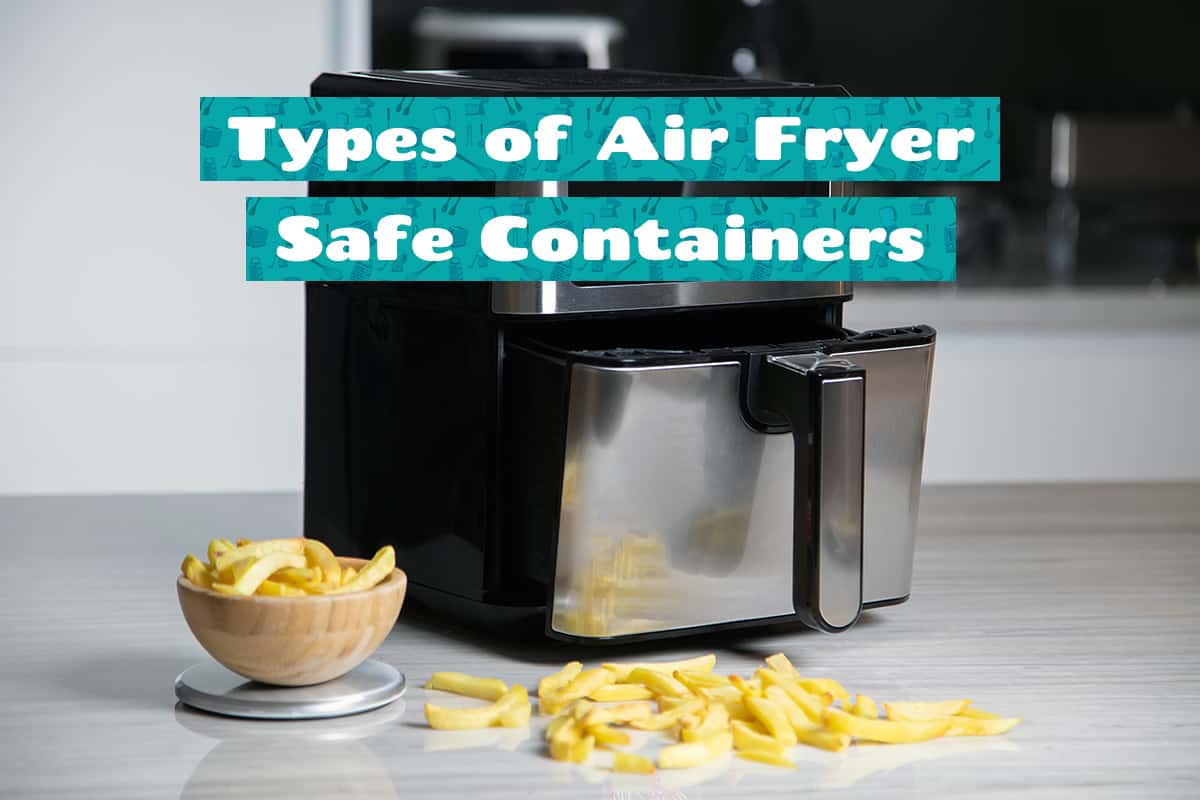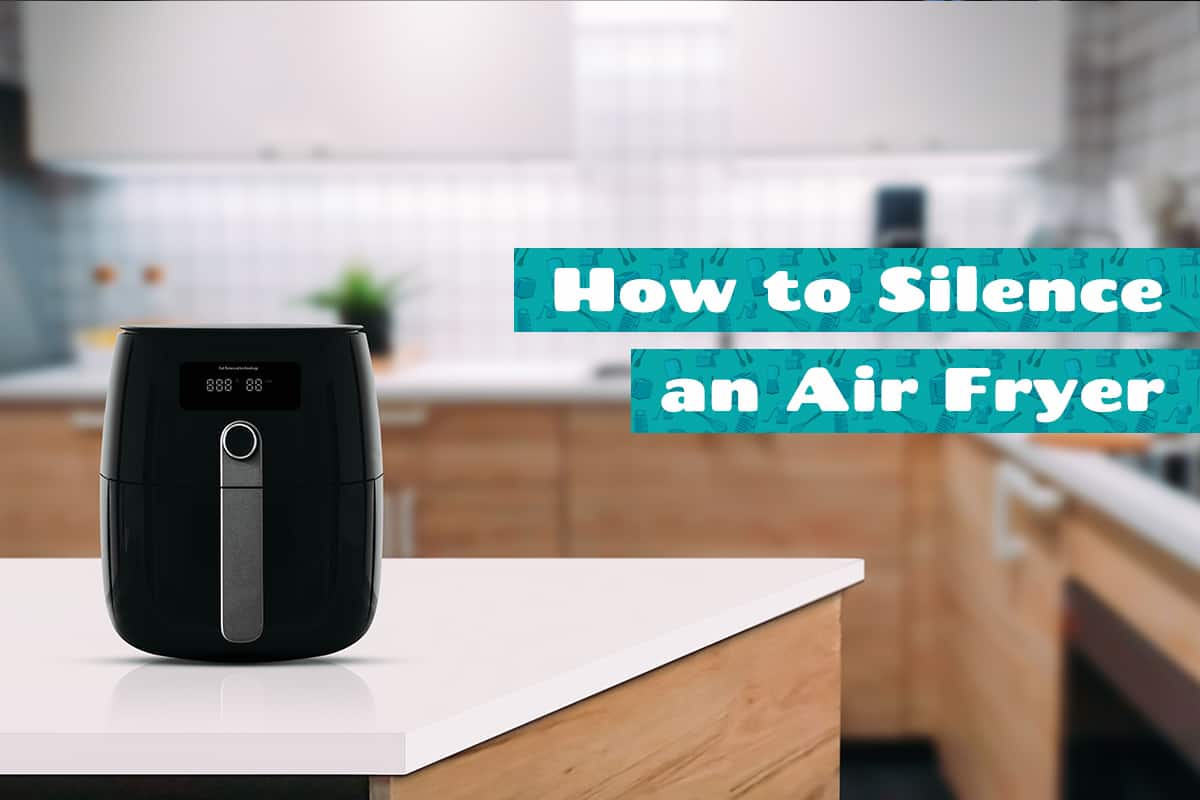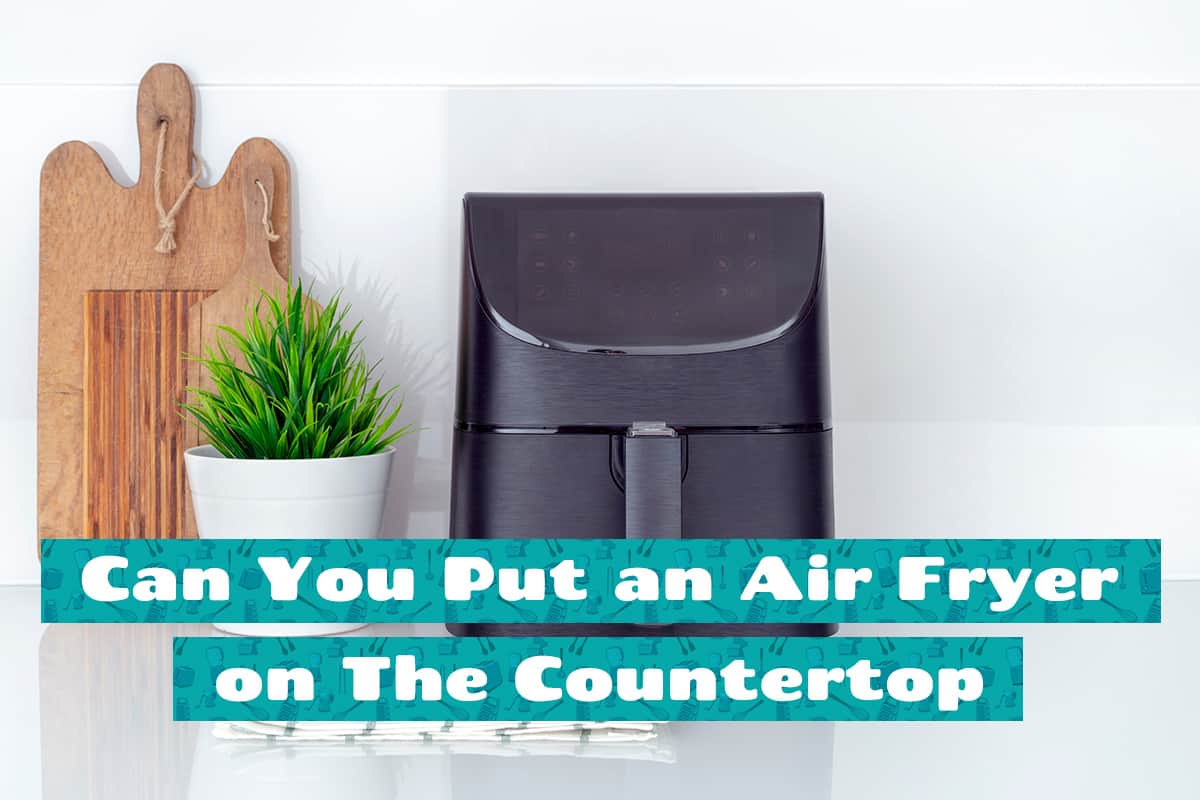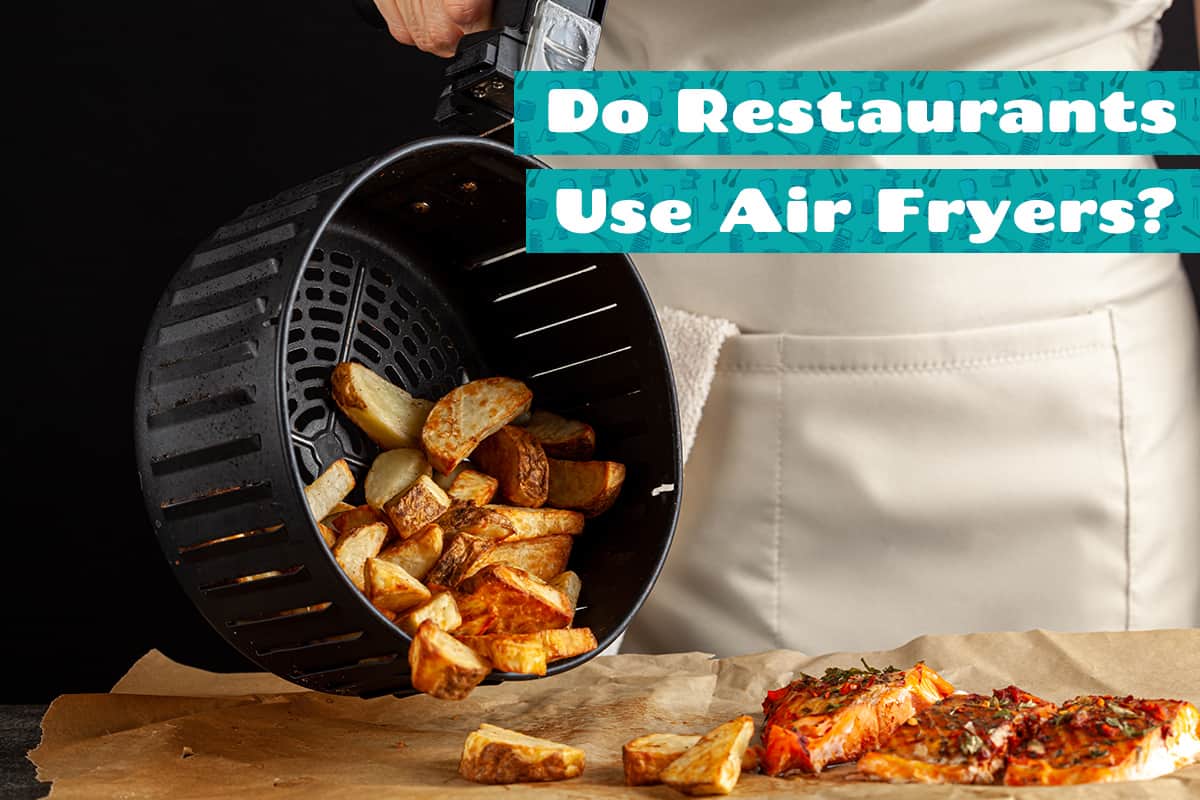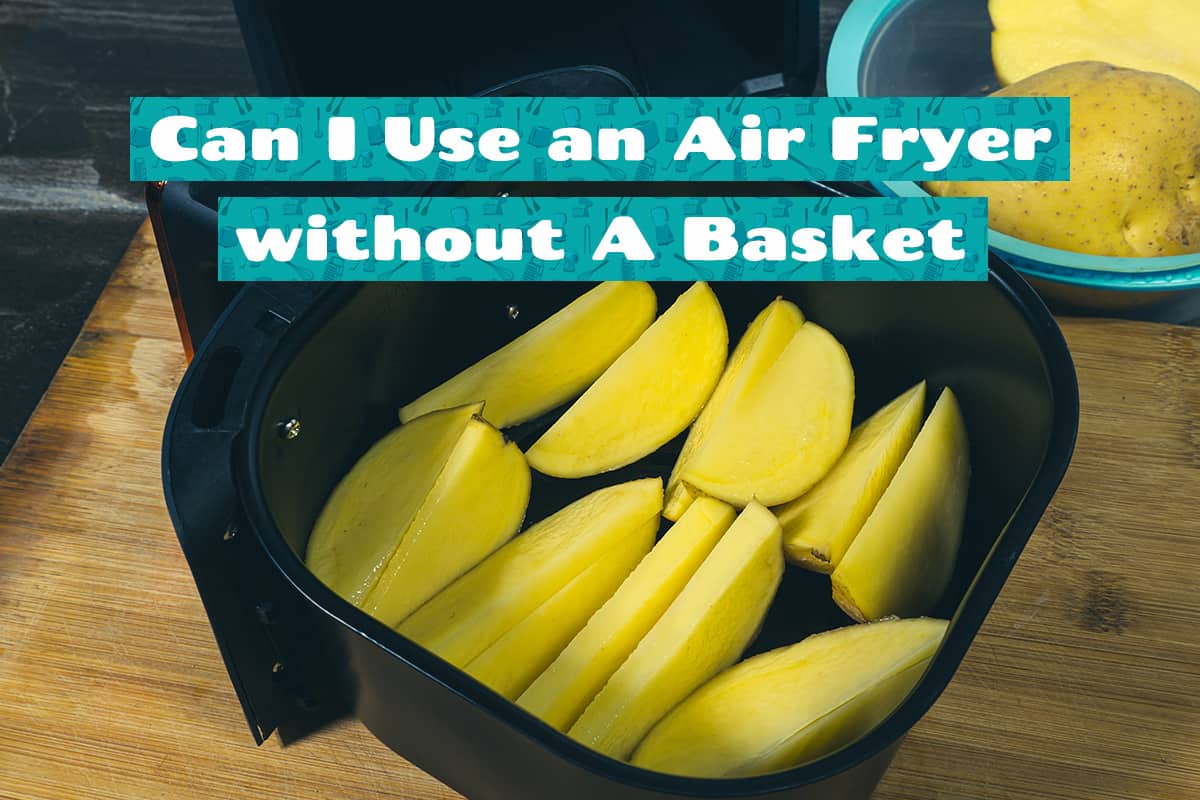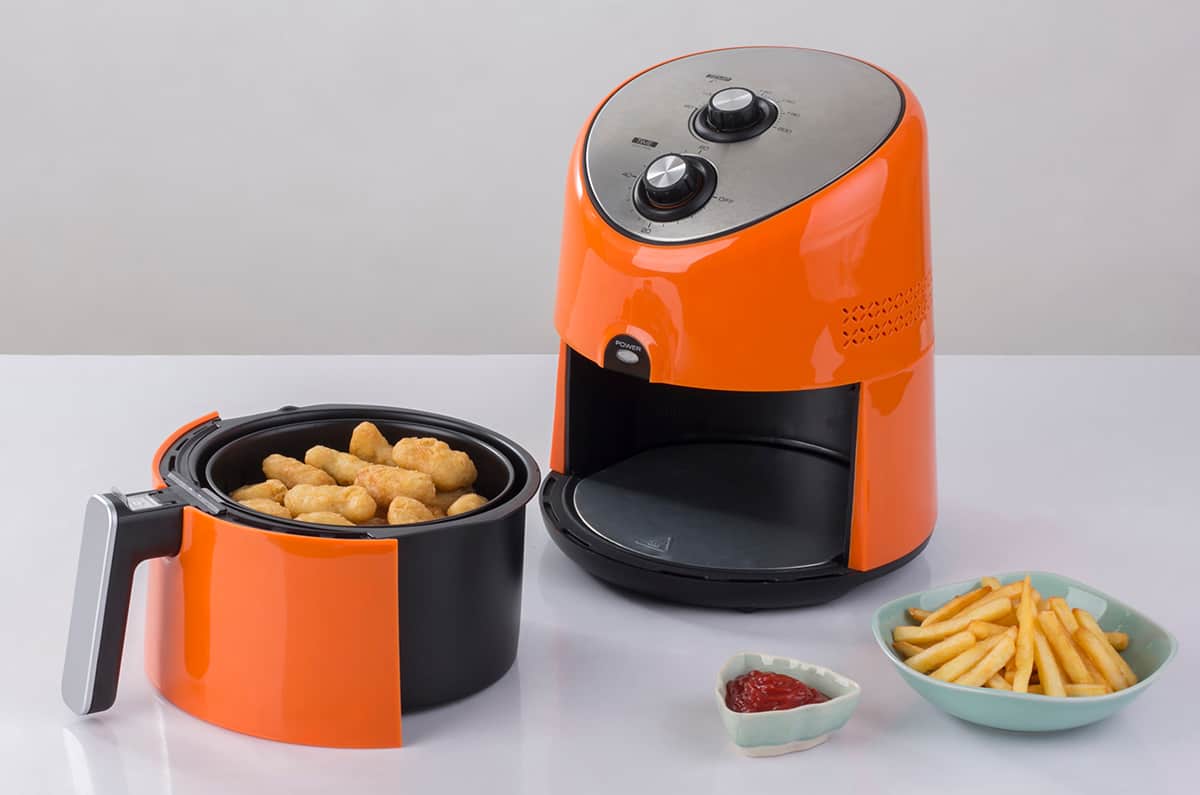Air fryers have changed the way we cook. By using hot air and a minimal amount of oil, they create delicious, crispy dishes. However, before you plop a steak into your air fryer’s basket, you should first know what sort of bakeware materials are safe to use.
Air fryer-safe bakeware materials are as follows:
- Glass (precisely tempered or glass ceramic)
- Silicone Containers
- Metal (stainless steel and aluminum)
- Ceramic Containers
Today, we will explore the types of air fryer-safe containers (and those that aren’t), explaining why each is suitable and how to use and maintain them.
Basics of Air Fryer Technology
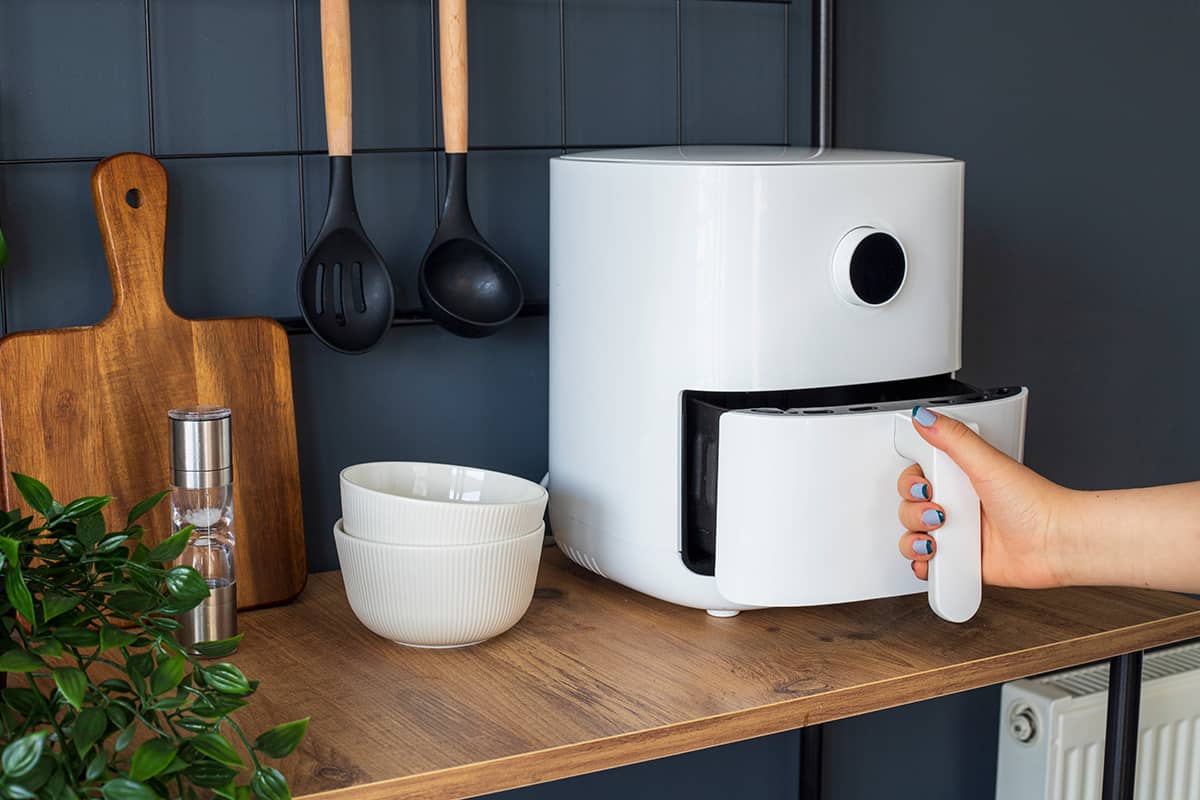
Air fryers use a heating element and a fan to circulate hot air at high speed. This rapid circulation creates a cooking environment that surrounds the food, heating it evenly. The result is a crispy exterior and moist interior, similar to deep frying but with significantly less oil.
For all intents and purposes, think of air fryers as miniature convection ovens.
Benefits of Air Frying
If you don’t have an air fryer, perhaps the following list of advantages will convince you to get one. That way, this guide will be more relevant to you.
- Reduced Fat Content: A quick spritz of a heat-resistant cooking oil is all it takes! You can even disregard the oil without sacrificing flavor and texture too much.
- Faster Cooking Times: Air fryers often cook food faster than traditional ovens due to their smaller sizes and highly efficient heating elements. This translates to less time spent in the kitchen and more time dining.
- Versatility: Air fryers are suitable for cooking various dishes, including meats, vegetables, and even desserts. The bigger the air fryer, the more food you can make in one batch.
Safety Considerations
While air fryers are indeed awesome, they are not toys. There are a few key safety points you need to bear in mind when using an air fryer:
- Avoid Overfilling: Do not overfill the cooking basket, as it can affect the air circulation and cooking performance.
- Use Safe Containers: Only use containers and accessories that are specified as air fryer safe. Non-compatible materials can melt or damage the appliance. We will discuss which materials are safe to use in air fryers in a bit.
- Follow Manufacturer Instructions: Do not stray from the manufacturer’s guidelines regarding temperature settings and cooking times. If anything goes wrong, you may void the appliance’s warranty.
Materials Safe for Air Fryers
Your air fryer will come with a basket that has non-sticking coating inside. You can place food directly into the basket if you want, but it will leave a big mess that’s a pain to clean. Instead, you can place your food in a safe container and place that container inside the basket.
But what are air fryer-safe containers? We’ll explain below.
1. Glass Containers
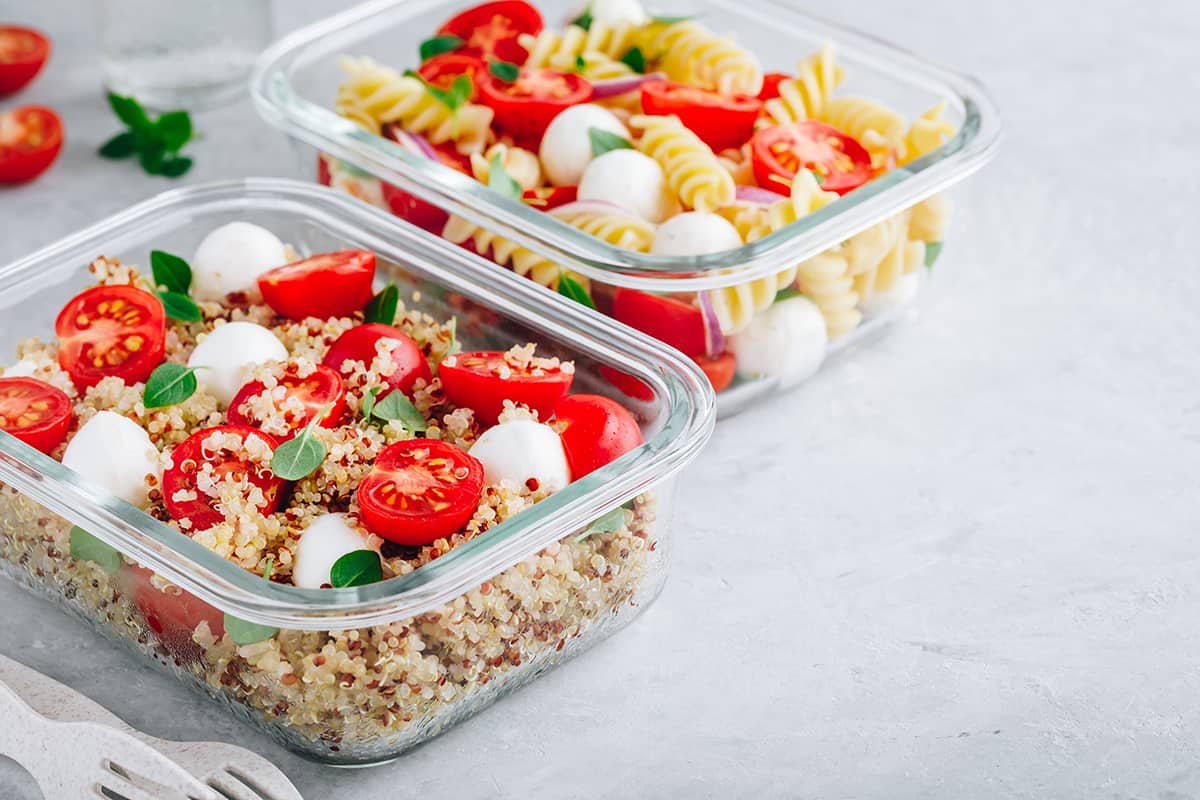
Glass conducts heat exceptionally well while also having a high tolerance. Any oven-safe material, including glassware. will be safe to use in your air fryer. However, there are a few types of glass you should know about.
- Tempered Glass: Tempered glass is manufactured to be more resistant to heat, making it suitable for air frying. It’s ideal for casseroles or other dishes that need a sturdy container.
- Glass Ceramic: Glass ceramic containers can withstand extreme temperature changes and are highly recommended for air fryers. However, regular glass containers should be avoided as they may crack under high heat.
2. Silicone Containers
![]()
Silicone is a heat-resistant and non-toxic material widely used in air fryer accessories. Their sleek surfaces allow food to slide right off, leaving minimal residue to clean up.
3. Metal Containers
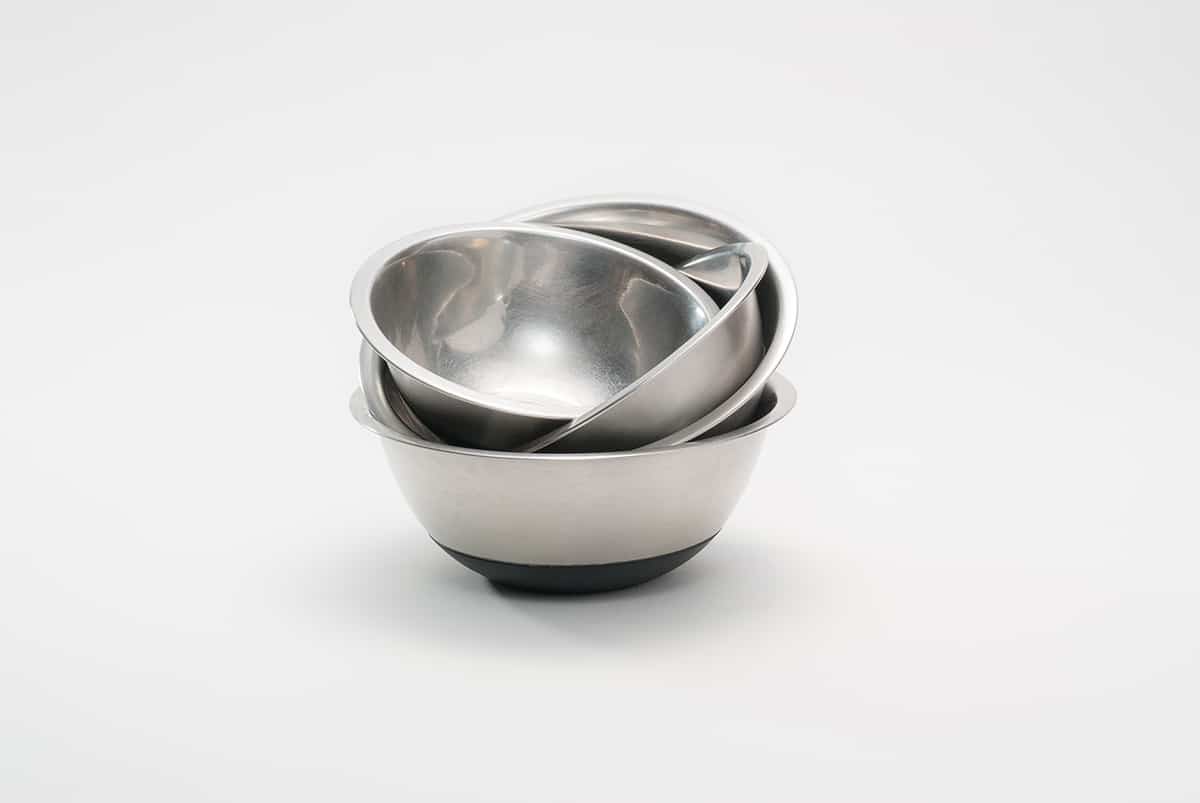
Metal containers are commonly used in air fryers and are excellent conductors of heat. If your goal is to crisp up the exterior of your food, this is your best option. There are two common metal options to choose from:
- Stainless Steel: Stainless steel is non-reactive and retains its shape under high temperatures. Pans, trays, and racks made of stainless steel are commonly used in air fryers.
- Aluminum: Aluminum containers are lightweight and provide uniform heating. This also includes aluminum foil! They are perfect for baking and roasting, but avoid using acidic foods as they might react with aluminum.
4. Ceramic Containers
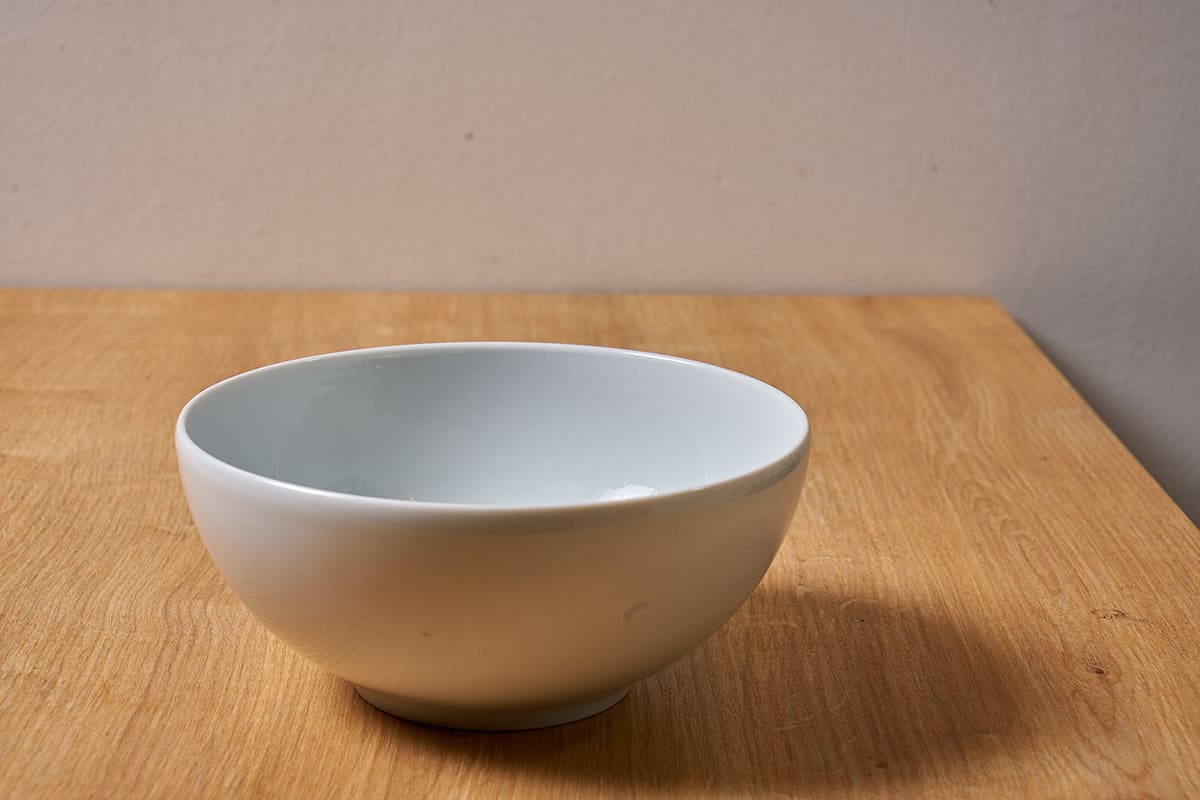
Ceramic containers offer excellent heat distribution and are safe to use in air fryers. They take longer to heat up compared to metal containers, but they also retain heat for much longer.
Containers to Avoid in Air Fryers
We’ve discussed the materials you can use in an air fryer. Now, let’s shift our focus to the materials that you should not put inside your air fryer basket.
1. Materials That Warp or Melt
Air fryers heat up to oven-level temperatures. As such, if you place anything with a low heat tolerance inside your air fryer, you’re going to have a bad time. Here’s a quick overview of materials that will warp or melt in an air fryer.
- Regular Glass: Unlike tempered or glass ceramic, regular glass can crack or shatter under the high heat of an air fryer.
- Plastic: Certain plastics may melt or warp under high temperatures, leading to potential contamination of food and damage to the appliance.
- Styrofoam Containers: These are highly susceptible to melting and should never be used in an air fryer.
2. Certain Coated Containers
The finishing coatings on certain dishware, specifically those not designed to be exposed to high levels of heat, will ruin your air-frying experience. The most common types of coatings that can ruin your kitchen fun are as follows:
- Non-Stick Spray Coatings: Aerosol sprays can create a sticky residue on air fryer baskets, reducing their non-stick capabilities.
- Containers with Damaged Coating: Containers with peeling or damaged non-stick coatings can release toxic substances during cooking.
3. Flimsy Aluminum Foil
Although you can use aluminum foil in an air fryer, non-heavy-duty foil can be problematic. The thinness of the material may cause it to heat up too quickly, burning your food’s exterior before the inside has time to cook. Also, any punctures in the foil can lead to leakage, which is another problem you have to think about.
Specialized Air Fryer Accessories
Instead of concerning yourself with what materials can and cannot go in an air fryer, why not use accessories that are designed for air fryers?
Baking Pans and Dishes
- Air Fryer Baking Pans: These are typically non-stick and come in various shapes and sizes, perfect for baking cakes, muffins, or even bread.
- Casserole Dishes: Specially designed for air fryers, these dishes are excellent for baking casseroles or lasagnas.
Racks and Skewers
- Multi-Level Racks: These racks increase the cooking space, allowing you to cook different foods simultaneously.
- Skewer Racks: Ideal for grilling kebabs or vegetables, they provide even cooking and easy handling.
- Cooling Racks: Used for cooling baked or fried items, promoting air circulation for uniform cooling.
Air Fryer Grill Pan
Air fryer grill pans are designed to mimic grilling, providing charred lines and flavors. Preheating the pan ensures optimal grilling, and using a bit of oil helps prevent sticking.
Silicone Molds and Cups
- Muffin Cups: Perfect for baking muffins or cupcakes, silicone cups provide easy release and cleanup.
- Egg Bite Molds: These molds enable you to create uniform egg bites, custards, or mini cheesecakes.
Parchment Liners
Parchment liners prevent sticking, ease cleaning, and can be used to steam or cook delicate items. Select perforated liners designed for air fryers to allow proper airflow during cooking. You can also try using various parchment paper alternatives in your air fryer.
Air Fryer Pizza Stone
A pizza stone in an air fryer helps achieve a crispy crust, emulating a traditional pizza oven effect. Preheat the stone, and handle it with care as it can be very hot.
Tips and Tricks for Air Fryer Cooking
Take a look at these pro tips and tricks when using your air fryer for the first or thousandth time:
- Preheating Your Air Fryer: Just like an oven, preheating your air fryer ensures consistent cooking. Most models require 3-5 minutes at the desired cooking temperature.
- Proper Placement of Food: Allow space for air to circulate; this ensures even cooking. Utilize racks for multi-layer cooking without compromising airflow.
- Using Oil Effectively: Even though air fryers require less oil, a light coat can add crispiness An oil sprayer (not aerosol based!) provides an even coat without drenching the food.
- Cooking Times and Temperatures: Air fryer cooking times are usually shorter than conventional methods. Follow recipes or guides for your specific air fryer model.
- Shake or Flip the Food: The great thing about the basket is that you can shake your food in it without worrying about spillage. However, if you’re using bakeware or an accessory, don’t shake the basket around since it can ruin your dish!
- Use the Different Cook Modes: Air fryer models usually have multiple cooking modes. These modes are preset that allow you to quickly set up your preferred cooking method (low and slow, high and fast, and anything in between) based on what you’re preparing.
